Les meilleurs idées 2007 et l'éducation
 Qu’est-ce qui est à toi? L’usage des idées. (Epictète)
Qu’est-ce qui est à toi? L’usage des idées. (Epictète)
Les idées d’aujourd’hui transformeront les vies de demain. Et il n’est guère besoin de préciser que la mondialisation génère un flot incalculable d’idées. Si certaines atteignent la surface, le Web fait en sorte que même celles qui traînent en profondeur peuvent remonter dans le courant, soulevées par la recherche et le temps. Car l’époque est une force capricieuse. Le New York Times vient de publier son relevé annuel des meilleures idées qui semblent faire leur chemin (The 7th Annual Year in Ideas). Curieux et intrigué, j’ai retenu celles parmi les 70 idées susceptibles d’affecter l’éducation.
L’ambiguïté favorise l’attirance (New York Times : Ambiguity Promotes Liking). Quoique ce phénomène s’applique à l’attirance des sexes, je crois qu’il peut aussi expliquer le désintéressement des élèves pour un professeur, une discipline, voire l’école en général.
It seems we are inclined to interpret ambiguous information about someone optimistically, assuming we will get along. We are usually let down, however, when we learn more.
Analyse urinaire de la communauté (New York Times : Community Urinalysis). Une façon de dresser un portrait de la consommation de substances dangereuses dans une école?
From a privacy standpoint, it’s a very clever approach to monitoring drug usage, because while it is involuntary drug users can’t help urinating it also manages to preserve the public’s anonymity.
Logiciels de foule (New York Times : Crowdware). Imaginez une communauté éducative développant ses propres widgets éducatifs.
The Paris-based portal Netvibes, for example, which opened its platform even before Facebook did, offers more than 93,000 widgets.
Législation wiki (New York Times : Mob Jurisprudence). Une idée qui pourrait être reprise pour les règlements de l’école, avec la participation des élèves et des parents.
In September, [the New Zealand police force] posted the 1958 Police Act online and invited Kiwis and non-Kiwis alike to visit the site and type in their own revisions to the law extending the concept of Wiki-style collaborative writing from encyclopedias to democracy.
Le neuroréalisme (New York Times : Neurorealism). Un rappel à la prudence dans l’interprétation de l’imagerie par résonance magnétique.
assertions about psychology even implausible ones like watching television improved math skills seem much more believable to laypeople when accompanied by images from brain scans.
Une chaise qui stimule l’exercice (New York Times : Office-Chair Exercise (for Men and Women)). Une brillante idée pour contrer l’épidémie d’obésité.
a squishy dome-topped prototype that bounces when you shift, realigning your spine and encouraging active sitting.
Il vaut parfois mieux abandonner (New York Times : Quitting Can Be Good for You). Apprendre à gérer l’effort et la persévérance.
In a paper published in the September issue of the journal Psychological Science, Gregory Miller of the University of British Columbia and Carsten Wrosch of Concordia University found that teenage girls who are unable to disengage themselves from trying to attain hard-to-reach goals exhibited increased levels of the inflammatory molecule C-reactive protein (C.R.P.), which in adults is linked with diabetes, heart disease and early aging.
La loi universelle de roche papier ciseaux (New York Times : Rock-Paper-Scissors Is Universal). Une nouvelle compréhension des rapports de force.
I think it’s a philosophical point. You have take by force,’ deception and cooperation. Each beats one but not the other. It’s the way the very fabric of social systems is structured.
Les objets qui se redressent d’eux-mêmes (New York Times : Self-Righting Object, The). La beauté des mathématiques, de la géométrie et de la physique appliquée aux objets.
The Gomboc is the physical realization of a mathematical theorem: that a « mono-monostatic » object — one that has a single stable point of equilibrium, or balance — must exist. And so it does. No matter how you orient it, the Gomboc always rights itself.
Scruter les wikis (New York Times : Wikiscanning). Pour accroître la validité des wikis en tant qu’outil d’écriture communautaire.
a way to put investigative powers in the hands of regular people.
L’électricité sans fil (New York Times : Wireless Energy). À l’ère de la mobilité des technologies de la communication, est-il besoin de commenter?
Wireless energy ports could eliminate cords on everything from lamps to laptops. Imagine pacemakers that never need a new battery, or highways that continuously recharge electric cars.
Les réseaux sociaux génétiques (New York Times : Zygotic Social Networking). Dangereux, mais puissant.
DNA provides ample opportunity to build jumbo-size kinship networks quickly.
(Image thématique : Idea for the Desert Sand’, par Victor Pasmore)
Par ricochet :
Les idées les plus subversives
Les meilleures inventions de 2006
Les connaissances toxiques
De technologie et d’humanité
Vous pouvez suivre les commentaires en réponse à ce billet avec le RSS 2.0 Vous pouvez laisser une réponse, ou trackback.
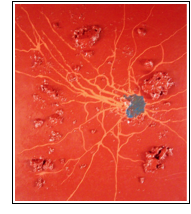
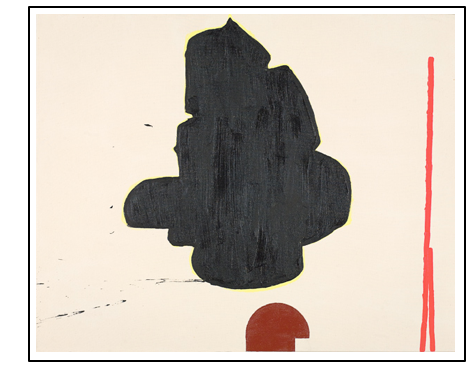

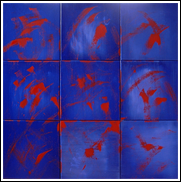
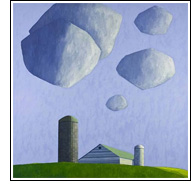
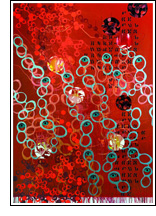
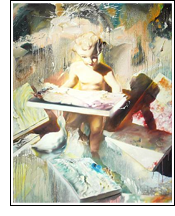
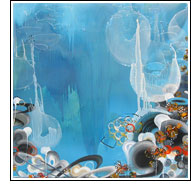

Je n’ai pas pu démystifier les textes en anglais même avec Lingro.com, mais certaines idées me plaient beaucoup… Les logiciels de foule, les wikis et les testes d’urine sont mes favoris.
Si seulement j’étais anglophone… Il me semble que toutes les bonnes études se font en anglais!
merci beaucoup pour ce résumé.
avez vous lu tout les articles ? Il y a en tellement, je ne sais pas comment vous trouvez le temps!!
merci encore